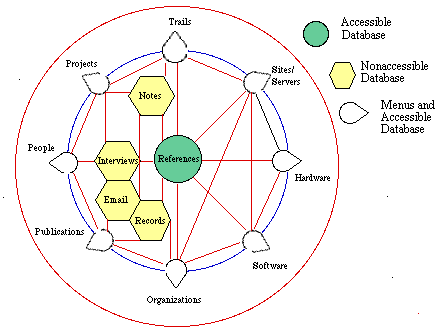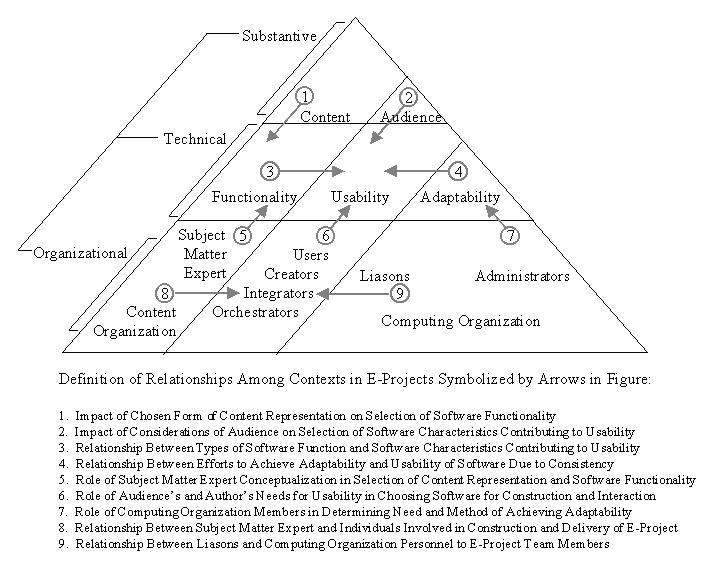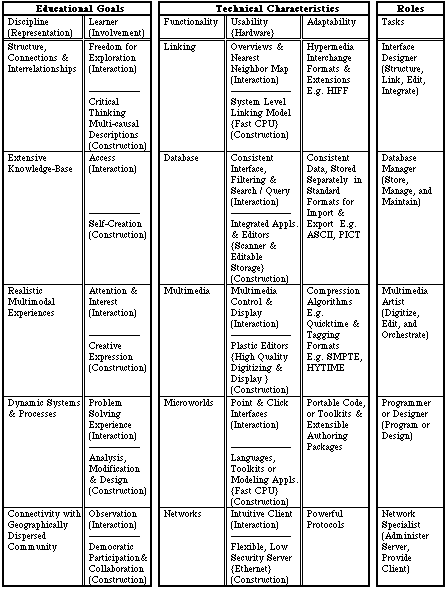
Context
Studied "samples of tomorrow" today!
Jackson, G. (1991) Conclusion Project Athena in the Evolution of Academic Computing at MIT. In C. Avril (Ed.), Windows on Athena: Vol.2: Project Athena's Curriculum Development Projects...And Beyond. Cambridge, MA: MIT."The Project Athena experiment embodied technological, pedagogical, and organizational questions: What does it take to design, implement, and operate a fully distributed, coherent, vendor-independent, academic computing environment for a university? How do faculty use such an environment educationally, and which of these uses prove effective? Who should manage the environment, support faculty and student users, and provide appropriate incentives and financing for academic computing to flourish? Like all experiments, Project Athena also sought to identify unrecognized issues, costs, and benefits surrounding advanced academic computing."
[See the previous expedition, A&E-KS and the
Introduction Overview for more detail and
further information about the general background, literature review and
problem statement of this phase.]
Methods
Formal Ethnographic (Qualitative)
Projects
Educational computing projects in academic
settings using advanced computing technology across a variety of disciplines.
|
The following projects, organizations and participants were the focus of this study:
Project: ESCAPE (HyperCard and HyperNews) Organizations: Educational Research and Information Systems (ERIS, Purdue) Participants: Hopper, Lawler, LeBold, Putnam, Rehwinkel, Tillotson, Ward Project: TODOR (BLOX) & Mechanics 2.01 (cT, Athena) Organizations: Athena and Academic Computing (AC, MIT) Participants: Bucciarelli, Daly, Jackson, Lavin, Schmidt Project: Physical Geology Tutor (AthenaMuse) Organizations: Center for Educational Computing Initiatives (CECI, MIT) Participants: Davis, Kinnicutt, Lerman, Schlusselberg Project: Context32 (Intermedia, StorySpace) Organizations: Institute for Research and Information Scholarship (IRIS, Brown) Participants: Kahn, Landow, Yankelovich [See the Switchboard for further information.] |
Notice the number of passages vs. the number of interviews.
Often interviews were not just about finding
out what happened,
but also being told how to find tiny
places in print where someone
had basically already said the same things.
This was particularly true for the more difficult truths.
Also, if I laid out the passages, and
found one from an existing publication,
I would use it to avoid the extensive
process of editing and clearing passages from my busy participants.
Researcher Role
In the data table, it is clear that the amounts and level of
data varied relative to the level of access I had to the project.
The most detailed and extensive was the ESCAPE project at Purdue.
(Most in depth were videos rather than audio tapes because I could impose.)
Technology in Data Collection, Analysis and Reporting
One of the things I have done consistently
across my research is use technology to support my research process.
In my first adventure, I used really advanced technology for this: HyperCard :)

Educational (Content)
Computing (Technical)
Projects (Organizational).
Projects are carried out in an educational context, they use computer
[See 6.1
Relationships Among Contexts of Advanced Courseware Projects.]
The factors in the organizational contexts
were far more critical than had been anticipated prior to the initiation
of this research. (Indicated by placing organizational
issues at the base of the model, and representing them visually with the
largest area.)
The projects consisted of complex technical
environments that required regular use and maintenance to survive, so authors
had to become managers of all of the complex substantive, technical and
organizational aspects of projects. Particularly because survival
depended upon finding a way to regularly obtain resources for supporting
continuous maintenance and delivery.
technology by definition, and they are carried out within the social
and economic structures of the organization in which they take place.

Summary and Discussion
Projects were characterized by simultaneous
attention to a consistent set of key factors across all three contexts.
The challenge was to maintain a balance between the contexts and manage
the relationships among factors!

Conclusions and Pointers to Next Phase of Expedition
Future projects viewed as opportunities
to further develop model of factors and relationships.
[See 6.5
Implications for Research about Future Courseware Projects.]
[See the overview of the next phase, EOTEF.]
© Mary E. Hopper [MEHopper] |
MEHopper@TheWorld.com
[posted 00/00/00 | revised 02/02/02]